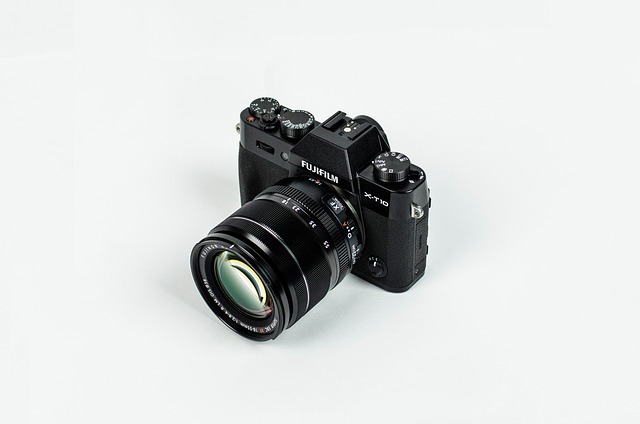Skin tags, though harmless, can be removed for cosmetic reasons. Advanced skin tag removal technology includes laser treatments and surgical excision, offering precise, minimally invasive options at specialized clinics. Laser removal, a popular choice, provides faster recovery and lower scarring risk, while surgery targets larger tags but carries risks. Safety, effectiveness, and individual needs guide selection between laser or surgical methods, with advanced technology enhancing both. Private St-Helens services offer tailored solutions, including follow-ups and topical treatments.
“Uncover the most effective methods for skin tag removal with our comprehensive comparison between laser and surgical techniques. Skin tags, though harmless, can be unsightly and irritating. This article provides a detailed overview of advanced skin tag removal technology, exploring the advantages and potential drawbacks of each method. From understanding these non-cancerous growths to evaluating safety and efficacy, we guide you in choosing the right option for optimal results.”
- Understanding Skin Tags: A Comprehensive Overview
- Laser Removal: Advantages and Potential Drawbacks
- Surgical Excision: Traditional Method and Modern Techniques
- Safety and Efficacy Comparison: Key Differences
- Choosing the Right Option: Factors to Consider for Optimal Results
Understanding Skin Tags: A Comprehensive Overview

Skin tags are small, soft skin growths that typically appear as harmless, hanging pieces of skin. They commonly occur in areas where skin rubs against itself, such as the neck, armpits, or groin. While they are generally harmless, some individuals choose to remove them for cosmetic reasons or to prevent discomfort caused by friction. Understanding these benign growths is a crucial first step in selecting an effective removal method.
Advanced skin tag removal technology offers both laser and surgical options at specialized clinics like Bristol Skin Tag Clinic. Laser treatments use targeted light energy to destroy the skin tag, while surgical excision involves cutting out the growth. Removing skin tags without surgery or cream is possible through these advanced methods, ensuring a safe and effective solution for those seeking a permanent fix. Private skin tag removal in Woking, for instance, provides discreet access to these treatments, catering to individual preferences and needs.
Laser Removal: Advantages and Potential Drawbacks

Laser removal has emerged as an advanced skin tag removal technology, offering both precision and minimal invasiveness. Its advantages include less downtime compared to surgical methods, reduced risk of scarring, and the ability to treat multiple tags in a single session. This non-surgical approach is often preferred for its convenience and relatively mild side effects, such as temporary redness or swelling.
However, potential drawbacks exist. Laser treatments may not be suitable for all skin types, especially darker tones, due to the risk of pigment changes. Additionally, results can vary, with some individuals requiring multiple sessions to achieve complete removal. Privacy concerns are also valid when considering laser removal in a private setting, like a clinic in Doncaster or Blackpool, as it involves exposing sensitive areas to specialized equipment. Nevertheless, as technology advances, newer procedures offer improved accuracy and safety profiles, catering to diverse patient needs and preferences for skin tag removal.
Surgical Excision: Traditional Method and Modern Techniques

Surgical excision has long been the traditional method for removing skin tags, employing scalpel and sutures to cut out the growths. However, modern techniques have significantly enhanced this approach, offering greater precision and quicker recovery times. Today, advanced skin tag removal technology includes the use of CO2 lasers, which vaporize the skin tag with a precise beam, minimizing bleeding and scarring. Alternatively, some dermatologists in Bolton may employ laser surgery, utilizing different wavelengths to target and destroy specific cells, leading to effective and permanent results for many clients seeking private skin tag removal at Bolton’s top dermatology clinics.
Safety and Efficacy Comparison: Key Differences

When comparing laser and surgical methods for skin tag removal, safety and efficacy are paramount considerations. Both approaches have their merits, but they also come with distinct differences that can impact patient outcomes. Laser removal, an advanced skin tag elimination technology, offers a non-invasive approach using targeted light energy to destroy tags. This method is generally safe, causing minimal pain and side effects, making it suitable even for sensitive skin. On the other hand, surgery involves physical excision, which may result in more significant risks like scarring and infection.
At the St. Helens Skin Tag Clinic, we offer a range of skin tag removal options, including advanced laser and radiofrequency treatments, catering to various patient needs. While laser treatment excels in precision and reduced downtime, surgical methods might be preferable for larger or more stubborn tags. As such, understanding these key differences is essential when choosing the right procedure for your specific case, whether you opt for laser vs. radiofrequency skin tag removal or consider other available options for sensitive skin.
Choosing the Right Option: Factors to Consider for Optimal Results

When considering skin tag removal, laser and surgical methods each offer unique advantages. The optimal choice depends on several factors, including skin type, tag size, and budget. For smaller tags, lasers might be a suitable, minimally invasive option, as they target the pigment in the skin tag, causing it to fade away over time. However, larger tags or those in sensitive areas may require surgery for complete removal.
Advanced skin tag removal technology has improved both methods’ effectiveness and safety profiles. For instance, certain laser treatments use advanced targeted energy delivery systems to minimize collateral damage. If you’re concerned about how to prevent skin tags from returning, some professionals recommend follow-up sessions or combining these methods with topical solutions like folic acid for skin tag removal. Additionally, private skin tag removal St-Helens offers discreet and personalized options for those seeking professional care tailored to their specific needs.
In comparing laser vs. surgical skin tag removal, both methods offer effective solutions with their own unique advantages. Laser treatment provides a non-invasive approach with quicker recovery times and minimal scarring, while surgical excision ensures precise removal with a lower risk of regrowth. Choosing the right option depends on individual preferences, budget, and specific circumstances. With advancements in skin tag removal technology, individuals now have more options than ever to address these benign growths safely and efficiently.
